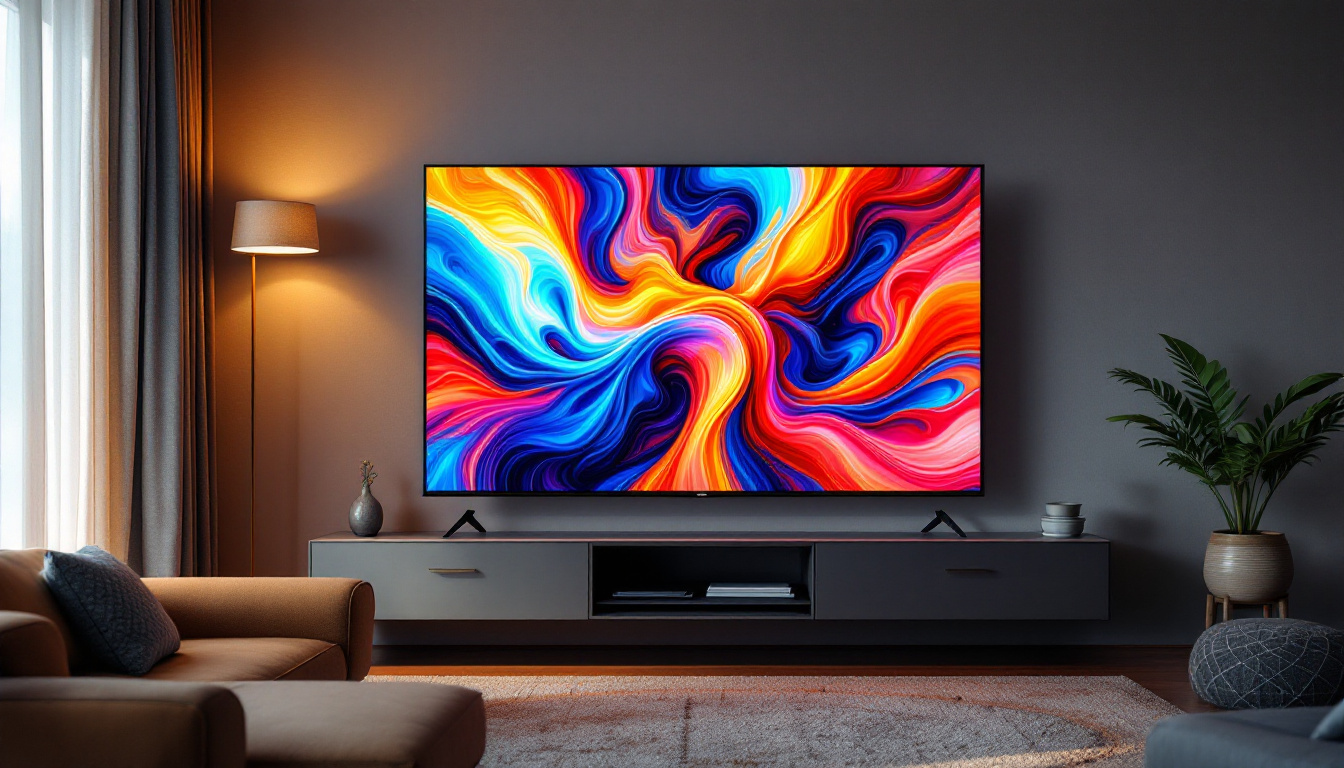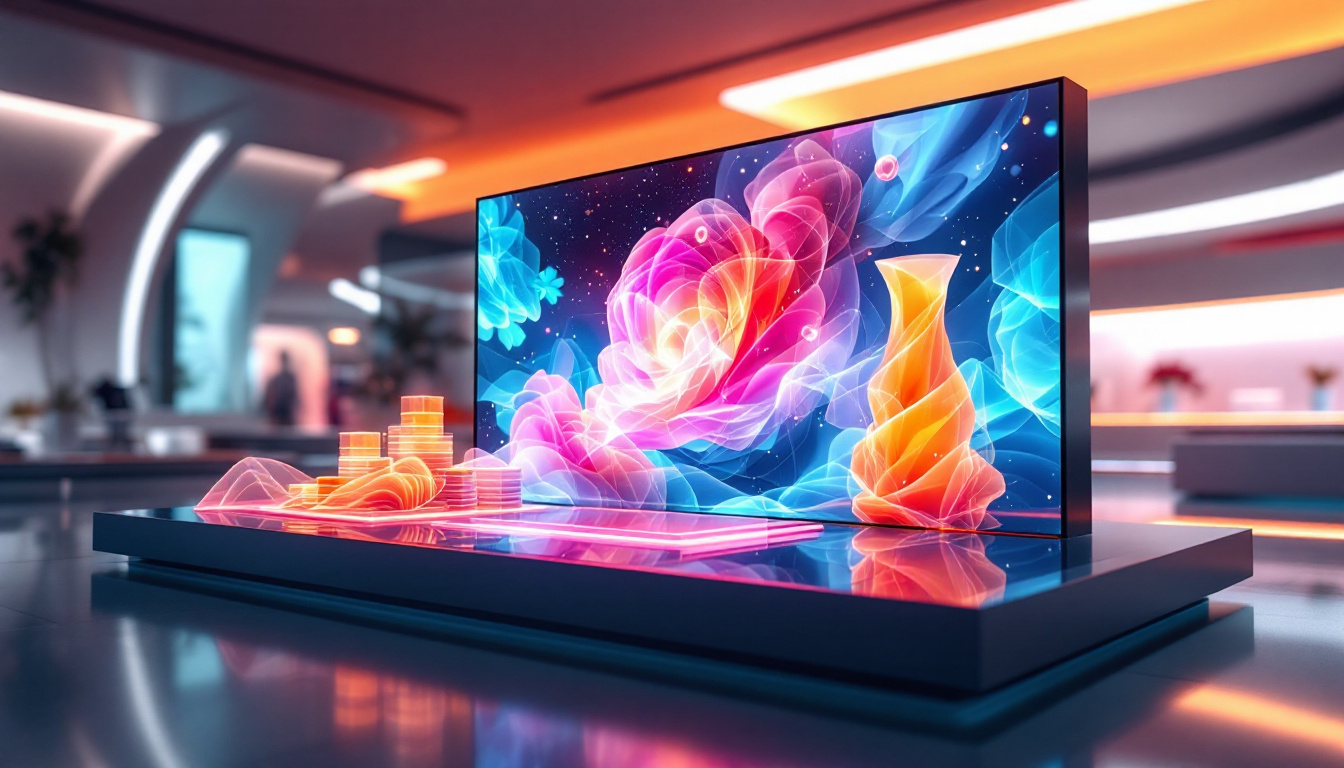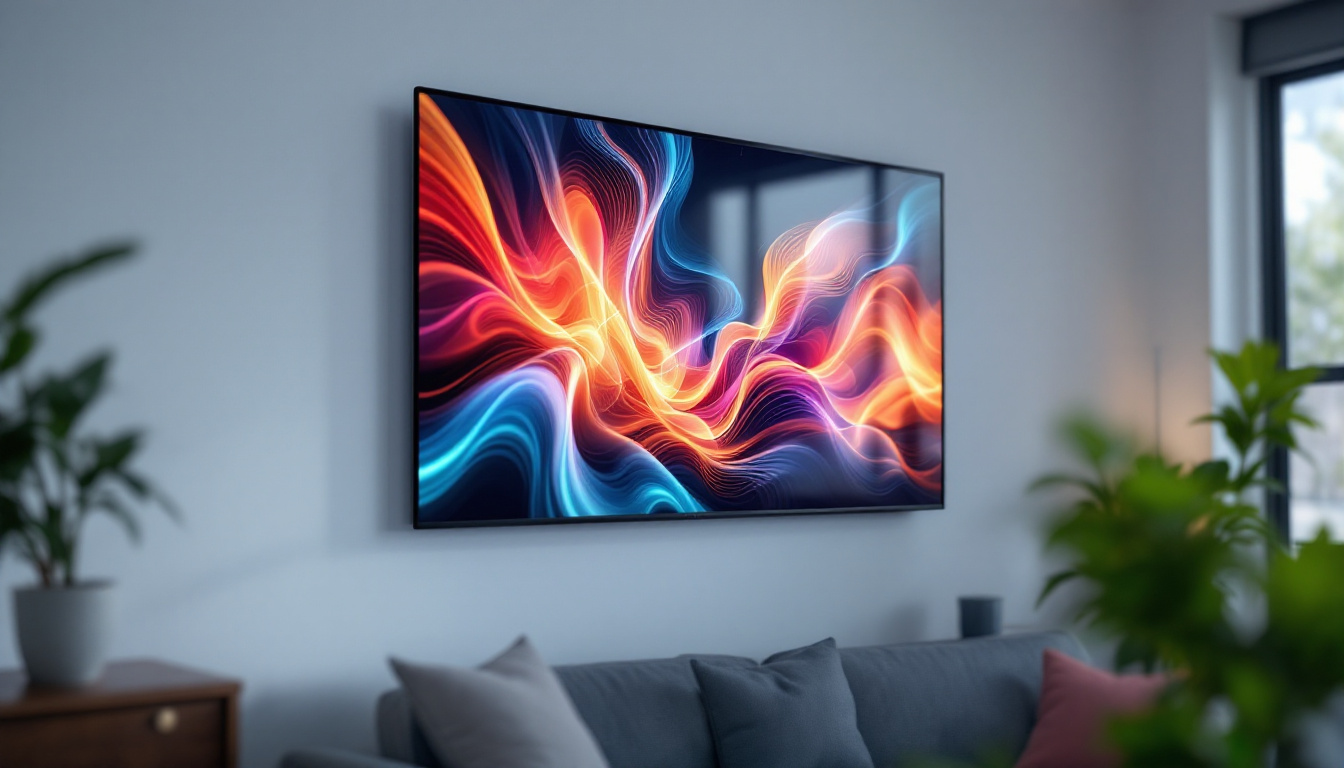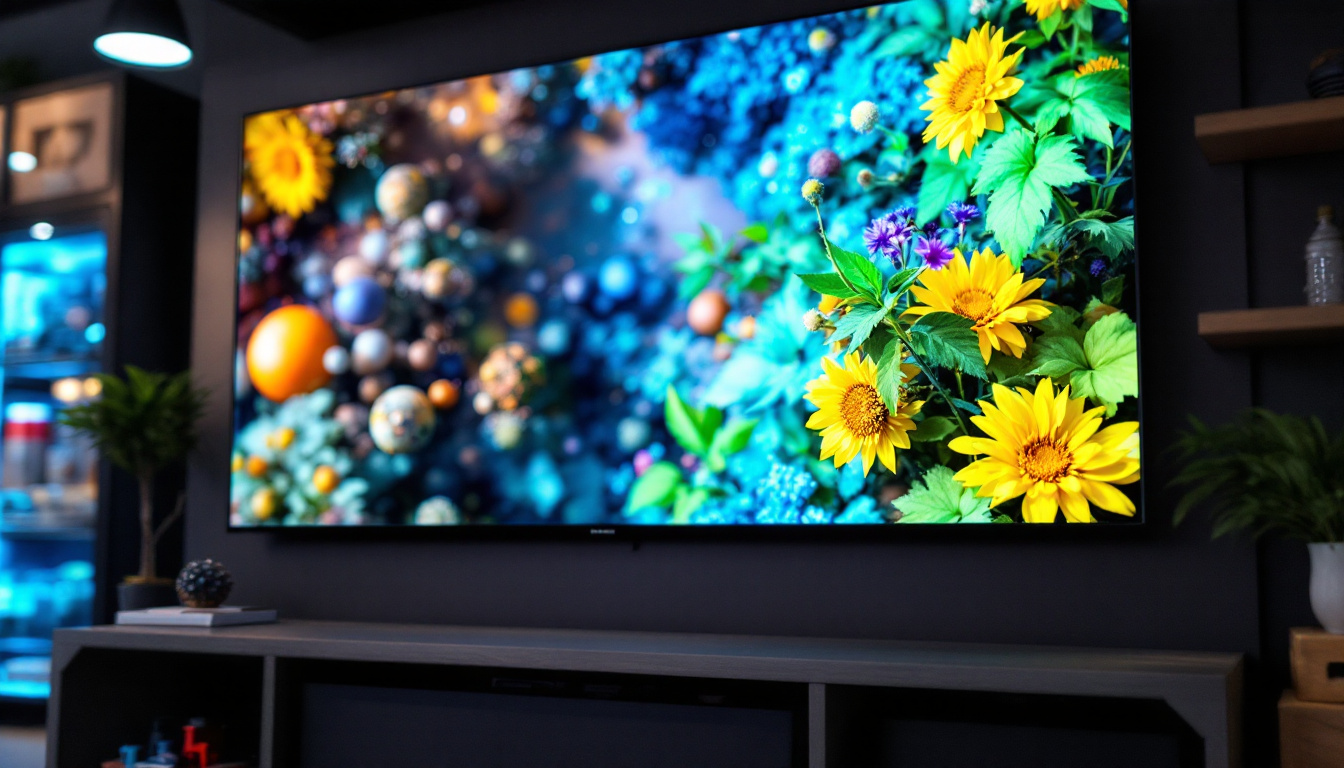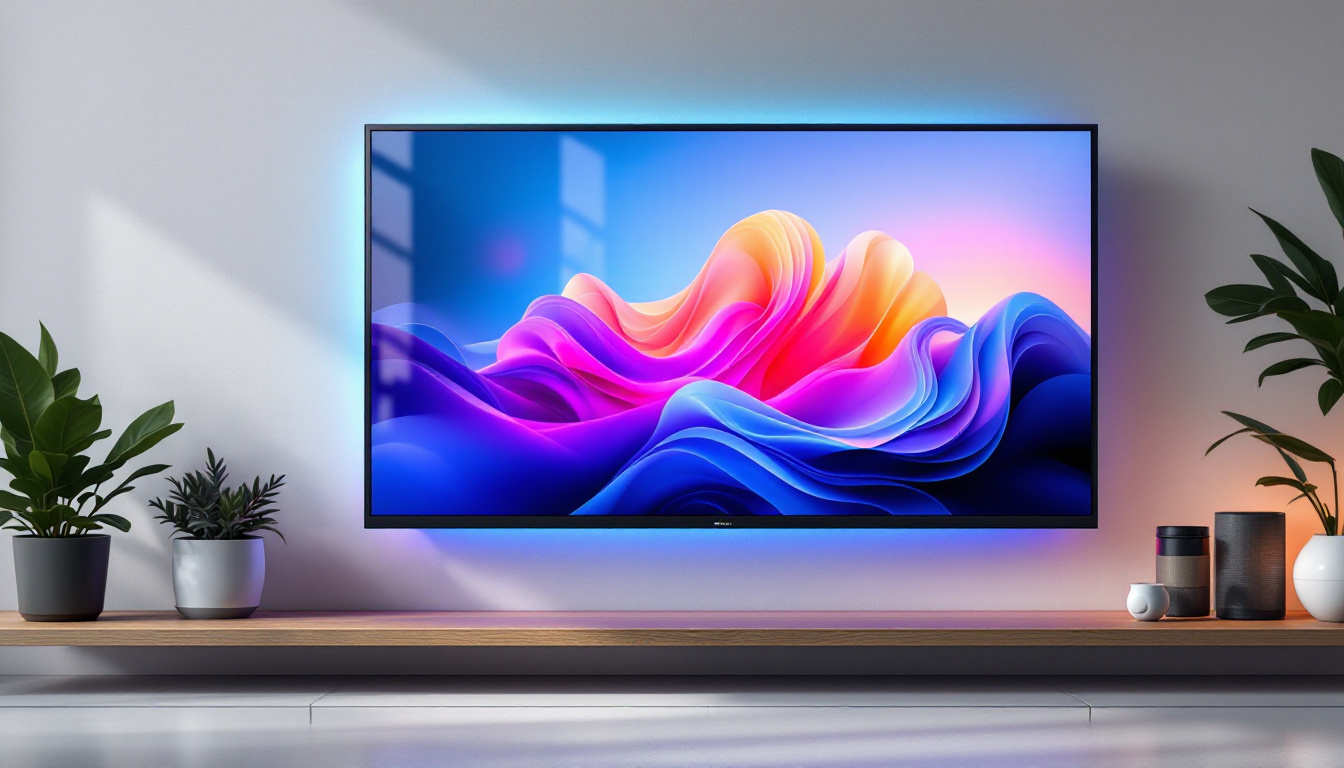The world of television technology has evolved dramatically over the past few decades. Among the various types of displays available, plasma and LED technologies have carved out their own niches. This article delves into the specifics of a 50-inch plasma TV and contrasts it with LED Display Technology, providing insights into their functionalities, advantages, and drawbacks.
Understanding Plasma Technology
Plasma TVs utilize a unique technology that relies on small cells filled with gas. When electricity is applied, the gas ionizes and emits ultraviolet light, which then excites phosphors to produce visible light. This process allows plasma screens to deliver vibrant colors and deep blacks, making them popular among home theater enthusiasts. The technology behind plasma displays has roots in the early 1960s, but it wasn’t until the late 1990s that it became commercially viable for consumer television. This evolution has led to a rich history of innovation, with manufacturers continuously refining the technology to enhance picture quality and energy efficiency.
Color Accuracy and Contrast
One of the standout features of plasma displays is their exceptional color accuracy. The ability to produce rich, saturated colors is a significant advantage for viewers who appreciate high-quality visuals. Additionally, plasma screens excel in contrast ratios, providing deeper blacks compared to many LED TVs. This characteristic is particularly beneficial when watching movies in dark environments, as it enhances the overall viewing experience. The technology behind plasma screens allows for a wider color gamut, meaning they can reproduce a broader range of colors, which is especially noticeable in nature documentaries or films with vibrant cinematography. As a result, viewers often find themselves immersed in the visual storytelling, as the colors appear more lifelike and engaging.
Viewing Angles
Another advantage of plasma technology is its superior viewing angles. Unlike many LED displays that suffer from color distortion and brightness loss when viewed from the side, plasma TVs maintain consistent color and brightness levels regardless of the viewer’s position. This makes them ideal for larger rooms where multiple viewers may be seated at different angles. The technology allows for a nearly 180-degree viewing angle, ensuring that everyone in the room can enjoy the same quality picture without having to jockey for the best seat. This feature is particularly advantageous during gatherings or movie nights, where friends and family can comfortably watch together without compromising on image quality.
Response Time and Motion Handling
Plasma TVs also boast impressive response times, which is crucial for fast-moving content such as sports or action films. The quick pixel response helps to minimize motion blur, ensuring that viewers enjoy a smooth and clear picture even during high-speed scenes. This feature is often a deciding factor for gamers and sports fans who prioritize fluid motion in their viewing experience. Furthermore, plasma technology’s inherent ability to handle frame rates effectively means that even the most intense action sequences are rendered with remarkable clarity. This capability is complemented by the screens’ ability to display high frame rate content, which enhances the overall realism of the viewing experience. As a result, viewers can fully engage with their favorite sports events or action-packed movies without distraction, making plasma TVs a preferred choice for those who demand top-tier performance in their home entertainment systems.
LED Display Technology: An Overview
LED (Light Emitting Diode) technology has gained immense popularity in recent years, primarily due to its energy efficiency and slim design. Unlike plasma displays, LED TVs utilize a backlighting system that consists of numerous tiny LEDs to illuminate the screen. This technology can be further categorized into two main types: edge-lit and full-array LED displays. Edge-lit displays use LEDs positioned around the perimeter of the screen, while full-array displays have a grid of LEDs behind the entire screen, allowing for better control over brightness and contrast in different areas of the image.
Energy Efficiency and Longevity
One of the most significant advantages of LED displays is their energy efficiency. LED TVs consume considerably less power compared to plasma models, making them a more environmentally friendly option. Additionally, LED technology tends to have a longer lifespan, often lasting over 10 years with regular use. This longevity can be appealing for consumers looking for a long-term investment. Furthermore, the reduced energy consumption not only lowers electricity bills but also contributes to a smaller carbon footprint, aligning with the growing consumer interest in sustainable living practices.
Brightness and HDR Capabilities
LED displays excel in brightness levels, often outperforming plasma screens in well-lit environments. This makes them suitable for rooms with ample natural light, where a bright picture is essential. Furthermore, many LED TVs support High Dynamic Range (HDR) technology, which enhances the contrast and color range, providing a more lifelike viewing experience. HDR allows for deeper blacks and brighter whites, creating a more immersive experience that is particularly noticeable in scenes with dramatic lighting. As content creators increasingly adopt HDR in movies and video games, having a compatible display becomes essential for viewers seeking the best possible visual fidelity.
Thin and Lightweight Design
The design of LED TVs is another factor that contributes to their popularity. With advancements in technology, LED displays can be made incredibly thin and lightweight, allowing for easy wall mounting and integration into modern home decor. This sleek design is often a significant selling point for consumers looking to save space without sacrificing quality. Additionally, many manufacturers are now focusing on aesthetic elements, offering a range of styles and finishes that can complement various interior designs. Some models even feature ultra-thin bezels, maximizing screen real estate and creating a more immersive viewing experience. As smart home technology continues to evolve, the ability to seamlessly integrate an LED TV into a smart home ecosystem adds another layer of appeal for tech-savvy consumers.
Comparing Plasma and LED Displays
When choosing between a 50-inch plasma TV and an LED display, several factors come into play. Each technology has its strengths and weaknesses, and understanding these can help consumers make informed decisions based on their viewing habits and preferences.
Picture Quality
In terms of picture quality, plasma displays generally offer superior color accuracy and contrast. The deep blacks and vibrant colors create a more immersive viewing experience, particularly in dark environments. However, LED displays have made significant strides in recent years, especially with the introduction of quantum dot technology, which enhances color reproduction and brightness.
Performance in Various Lighting Conditions
LED displays shine in bright environments, where their high brightness levels can combat glare and reflections. Plasma TVs, on the other hand, perform best in controlled lighting conditions. For viewers who watch TV primarily during the day or in brightly lit rooms, an LED display may be the better choice. Conversely, those who enjoy watching movies in darkened settings may prefer the rich picture quality of plasma technology.
Cost Considerations
Price is often a determining factor when purchasing a television. Generally, plasma TVs tend to be more affordable than their LED counterparts, especially in larger sizes. However, with the decline in plasma production, consumers may find it challenging to locate new plasma models. LED TVs, while often pricier, offer a broader range of options and features, including smart TV capabilities and advanced connectivity.
Future of Television Technology
The television landscape continues to evolve, with new technologies emerging to enhance the viewing experience. While plasma technology has largely been phased out in favor of LED and OLED displays, understanding its impact on the industry is essential. Innovations such as MicroLED and OLED have taken center stage, promising even greater picture quality and efficiency.
OLED Technology
Organic Light Emitting Diode (OLED) technology has gained traction as a premium alternative to both plasma and LED displays. OLED screens offer the same deep blacks and vibrant colors as plasma while providing the energy efficiency and slim design of LED TVs. The self-emissive nature of OLED technology allows each pixel to emit its own light, resulting in unparalleled contrast and color accuracy.
MicroLED: The Next Big Thing
MicroLED technology is another exciting development in the television industry. This technology combines the best features of OLED and LED, offering high brightness levels, excellent color accuracy, and the ability to create large screens without bezels. As MicroLED technology matures, it may redefine the standards for display quality and performance.
Smart TV Features
Modern televisions are increasingly equipped with smart features, allowing users to access streaming services, browse the internet, and connect with other smart devices. While both plasma and LED displays can be integrated with smart technology, LED TVs have a wider range of options and compatibility with various streaming platforms. This trend towards smart TVs is likely to continue, making it an essential consideration for consumers.
Conclusion
In conclusion, both 50-inch plasma and LED displays have their unique strengths and weaknesses. Plasma technology offers exceptional color accuracy, contrast, and viewing angles, making it a favorite among cinephiles and gamers. On the other hand, LED displays provide energy efficiency, brightness, and a sleek design, appealing to consumers in well-lit environments.
As technology continues to advance, the choice between plasma and LED may become less relevant, with OLED and MicroLED emerging as the future of display technology. Ultimately, understanding the differences between these technologies can help consumers make informed decisions that best suit their viewing preferences and lifestyles.
Whether one opts for a plasma or LED display, the most important factor remains the enjoyment of the viewing experience. With the right television, every movie night or gaming session can become a memorable event.
Discover the Future of Visual Experience with LumenMatrix
As you consider the advancements in television technology and the impact on your viewing experience, LumenMatrix invites you to explore the next generation of LED display solutions. With our commitment to innovation and excellence, we offer a wide range of LED display modules, from Indoor and Outdoor LED Walls to specialized options like Vehicle and Sports LED Displays. Embrace the future with our All-in-One LED Displays, LED Posters, and revolutionary Transparent LED Displays, all designed to create immersive visual experiences and enhance engagement. Check out LumenMatrix LED Display Solutions today and see how we can transform your visual communication and captivate your audience.

